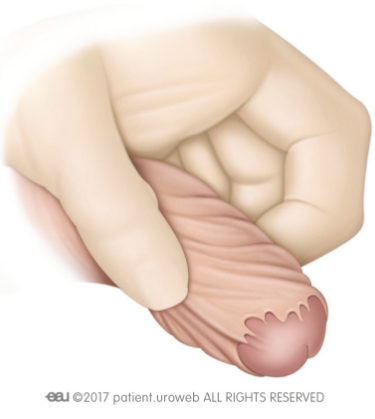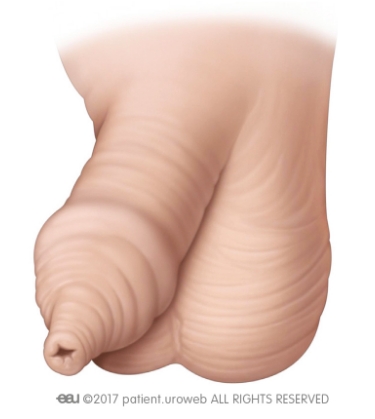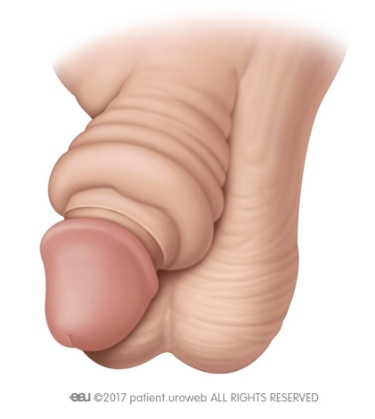Foreskin disorders
What are foreskin disorders?
Foreskin disorders are a group of relatively common disorders which affect many men at some point in their lives. Many are diagnosed in infancy and treated with early circumcision, though some conditions present in adulthood and benefit from other actions instead.
Sandhurst Urology offers diagnosis, management, and medical intervention to treat foreskin disorders from our clinic in Bendigo. To book an appointment, please ask your GP for a referral.

Symptoms of foreskin disorders
Foreskin disorders can take several forms, with some being minimally impactful and others indicating a medical emergency. Their symptoms can include:
- An unusually tight foreskin that you cannot pull back
- Unusual odours or discharge
- A rash on the foreskin and/or penis
- Bruising or discolouration on the foreskin or penis
- Redness and swelling in or around the head of the penis
- Itching on, under, or around the foreskin
- Pain during erections and/or sex
- Difficulty urinating and/or ejaculating
- Patches of shiny or white skin on the penis
- Patches of rough or crinkly skin that cracks or bleeds.
Remember that your own experience with a foreskin disorder is individual – you may not experience every symptom and may experience slightly different symptoms to those specified. For further advice and diagnosis, book an appointment at Sandhurst Urology.



How foreskin disorders are diagnosed
The doctor generally diagnoses foreskin disorders with a physical exam, typically assessing the foreskin’s condition and ability to move alongside the penis as a whole and asking about your medical history. If they suspect a foreskin disorder, the tests commissioned to confirm it may include:
- Urethral swab – your doctor may swab the skin around the urethra and send the sample to a pathology lab for testing. If your symptoms are caused by bacteria, the test can identify them and inform your treatment.
- Blood tests – especially if you have repeated infections in the penis and foreskin, a blood test may be recommended to check for other infections. The test may also identify reproductive diseases such as HIV.
- Urine test – as well as identifying STIs that damage the foreskin’s health, this test may expose urine infections or other contributing health conditions such as diabetes.
How foreskin disorders are diagnosed
The doctor generally diagnoses foreskin disorders with a physical exam, typically assessing the foreskin’s condition and ability to move alongside the penis as a whole and asking about your medical history. If they suspect a foreskin disorder, the tests commissioned to confirm it may include:
- Urethral swab – your doctor may swab the skin around the urethra and send the sample to a pathology lab for testing. If your symptoms are caused by bacteria, the test can identify them and inform your treatment.
- Blood tests – especially if you have repeated infections in the penis and foreskin, a blood test may be recommended to check for other infections. The test may also identify reproductive diseases such as HIV.
- Urine test – as well as identifying STIs that damage the foreskin’s health, this test may expose urine infections or other contributing health conditions such as diabetes.
Preventing foreskin disorders
In addition to specific advice provided by your medical team, the following strategies may reduce your likelihood of developing a foreskin disorder:
Treatments for foreskin disorders
Not every foreskin disorder requires invasive treatment. Instead, your doctor may recommend one of the following treatments:
As with any condition, always seek expert guidance to prevent and treat foreskin disorders effectively. Ask your GP for a referral to Dr Rohan Hall at Sandhurst Urology for individualised advice.
Medical interventions for foreskin disorders
Treatments offered through Sandhurst Urology’s Bendigo clinic include:
- Circumcision – if the foreskin is significantly difficult to retract or reposition (phimosis or paraphimosis), the best solution may be to remove it entirely. As well as preventing the condition from reoccurring, it may be offered as an emergency treatment for paraphimosis which significantly restricts blood flow.
- Partial circumcision – your doctor may recommend removing only the tip of the foreskin. This typically exposes the tip of the glans and leaves room for swelling as needed, but leaves enough skin remaining that it can be pulled back as normal. It may be right for you if your doctor recommends a circumcision but you want to retain a foreskin.
- Frenuloplasty – making a small cut in the foreskin on the underside of the penis sometimes loosens it enough to reposition it, as well as allowing space for a swelling or bulging glans. It is similar to preputioplasty, which combines small cuts with skin stretching to achieve a result as natural-looking as possible.
Providing Excellent Urological Care of the Highest Standards
Book a consultation with Sandhurst Urology today